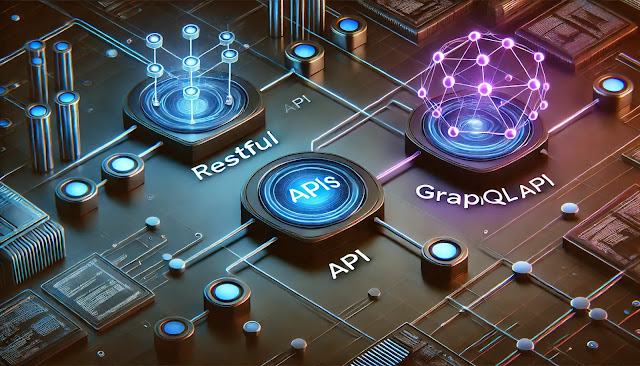APIs (Application Programming Interfaces) have become the backbone of modern software development, enabling seamless communication between different applications and services. Whether you're a developer, a product manager, or a tech enthusiast, understanding APIs—particularly RESTful and GraphQL APIs—can significantly enhance your ability to build and integrate powerful digital solutions. This guide will provide an in-depth look at RESTful and GraphQL APIs, their differences, and best practices for mastering them.
Understanding RESTful APIs
REST (Representational State Transfer) is an architectural style used for designing networked applications. RESTful APIs follow a set of principles that make them scalable, stateless, and easy to work with.
Key Features of RESTful APIs
Statelessness: Each request from a client to a server must contain all necessary information, and the server does not store client session data between requests.
Resource-Oriented: Resources are identified using URLs, and HTTP methods (GET, POST, PUT, DELETE) are used to perform operations on these resources.
Standardized Responses: RESTful APIs typically return data in JSON or XML format, making them easily readable and integrable.
Scalability: Since RESTful APIs do not maintain client state, they can efficiently scale to handle large volumes of requests.
When to Use RESTful APIs
RESTful APIs are best suited for:
Web applications with standard CRUD (Create, Read, Update, Delete) operations
Microservices architectures
Public APIs that need broad compatibility with various clients
Understanding GraphQL APIs
GraphQL is a query language for APIs and a runtime for executing those queries against your data. Developed by Facebook, GraphQL provides more flexibility compared to REST by allowing clients to specify the exact data they need.
Key Features of GraphQL APIs
Flexible Queries: Clients can request only the data they need, reducing over-fetching and under-fetching issues.
Single Endpoint: Unlike RESTful APIs, which often have multiple endpoints, GraphQL operates with a single endpoint for all queries.
Strongly Typed Schema: The schema defines data types and relationships, ensuring predictable API responses.
Real-Time Data Fetching: Supports subscriptions for real-time updates.
When to Use GraphQL APIs
GraphQL is best suited for:
Applications requiring highly dynamic data fetching
Mobile applications with limited bandwidth
Complex systems where relationships between data entities need to be optimized
RESTful vs. GraphQL: A Comparison
| Feature | RESTful APIs | GraphQL APIs |
|---|---|---|
| Endpoint Structure | Multiple endpoints | Single endpoint |
| Data Fetching | Fixed response structure | Customizable queries |
| Performance | May lead to over-fetching | Efficient data retrieval |
| Learning Curve | Easier for beginners | Requires understanding of schemas and resolvers |
| Caching | Well-supported with HTTP caching | More complex caching strategies |
Best Practices for Mastering APIs
Regardless of whether you choose RESTful or GraphQL APIs, following best practices ensures efficient and secure API development:
Use Proper Authentication & Authorization: Implement OAuth, JWT, or API keys to secure API access.
Follow Versioning Strategies: Maintain API versions to prevent breaking changes when updates are introduced.
Optimize Performance: Use caching mechanisms, pagination, and rate limiting to improve response times and API efficiency.
Write Clear Documentation: Provide detailed API documentation using tools like Swagger (for REST) or GraphQL Playground.
Monitor and Debug: Utilize logging and monitoring tools like Postman, GraphQL Voyager, or API Gateway analytics to track API performance and errors.
Both RESTful and GraphQL APIs have their unique advantages and use cases. RESTful APIs are well-established and widely supported, making them suitable for many applications. On the other hand, GraphQL offers more flexibility, making it ideal for complex and dynamic data fetching needs. By understanding the key differences and best practices, you can confidently design and integrate APIs that enhance your applications and workflows.

Comments
Post a Comment